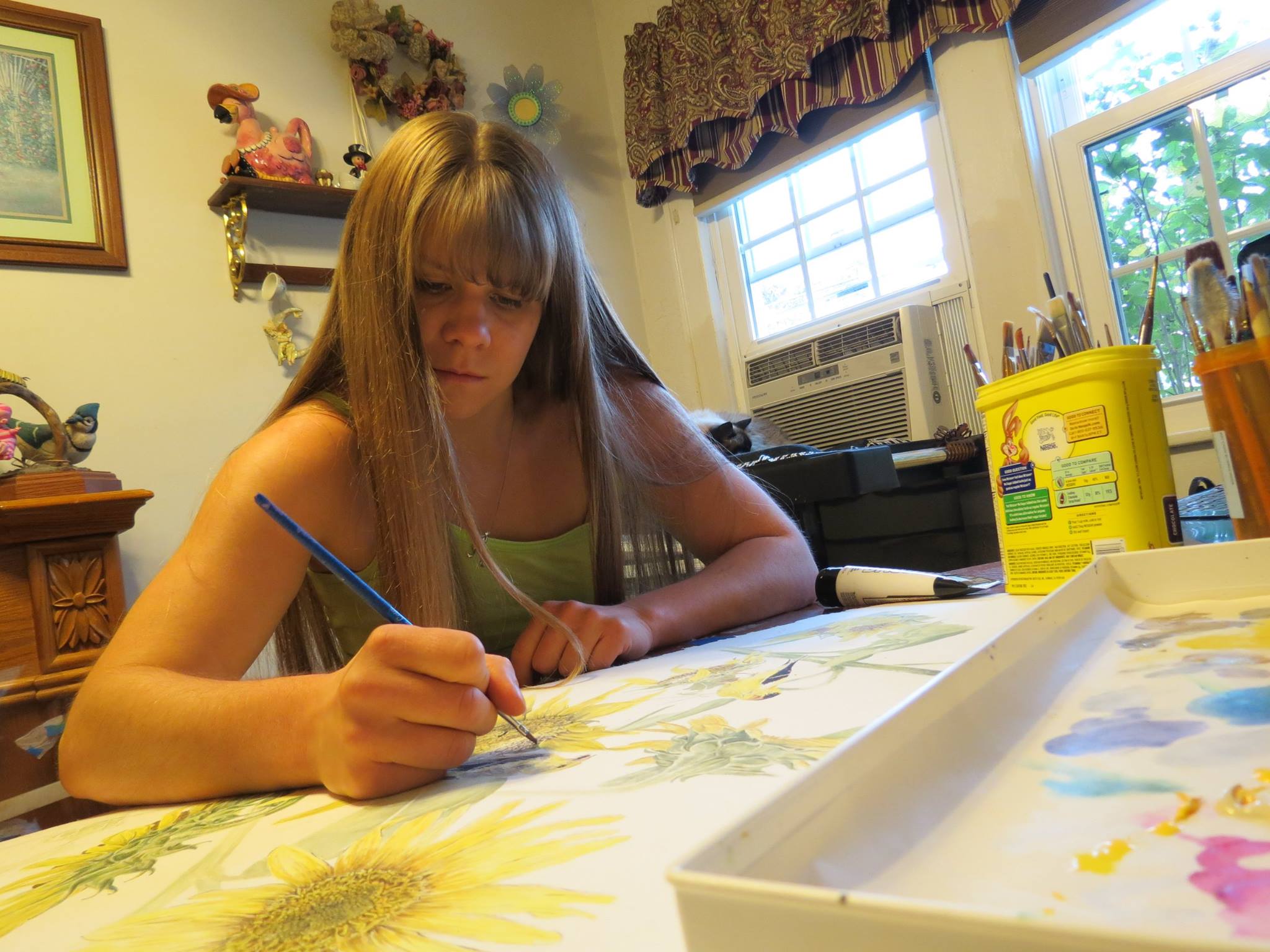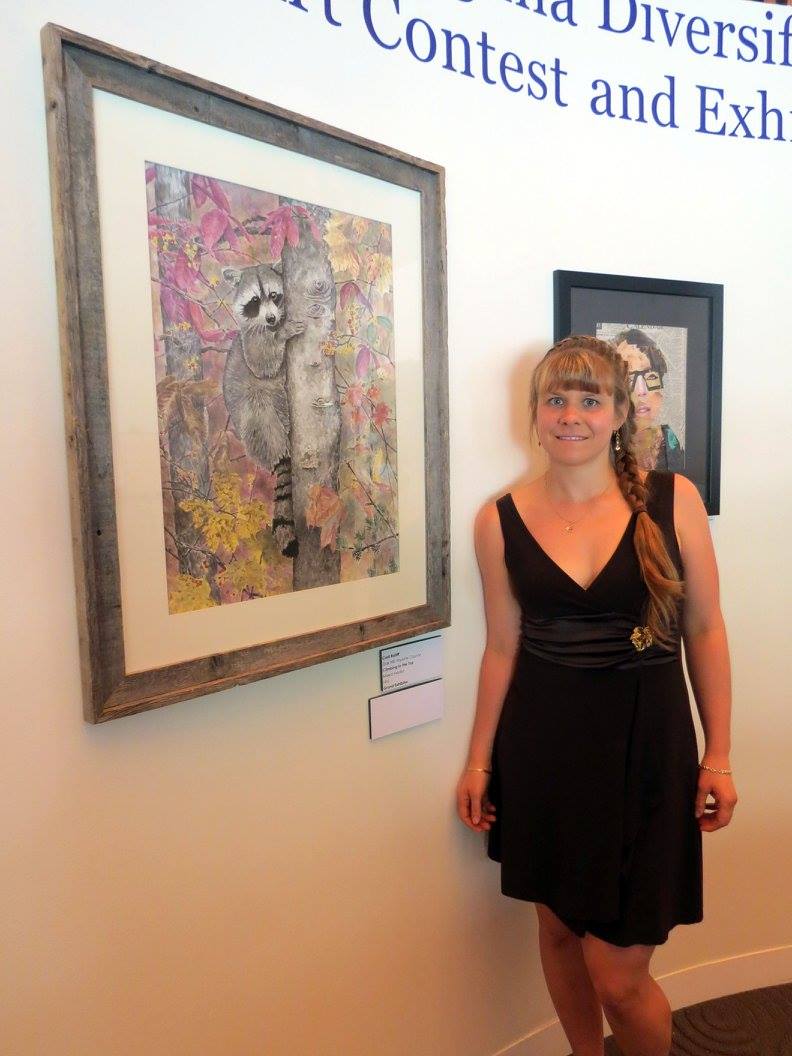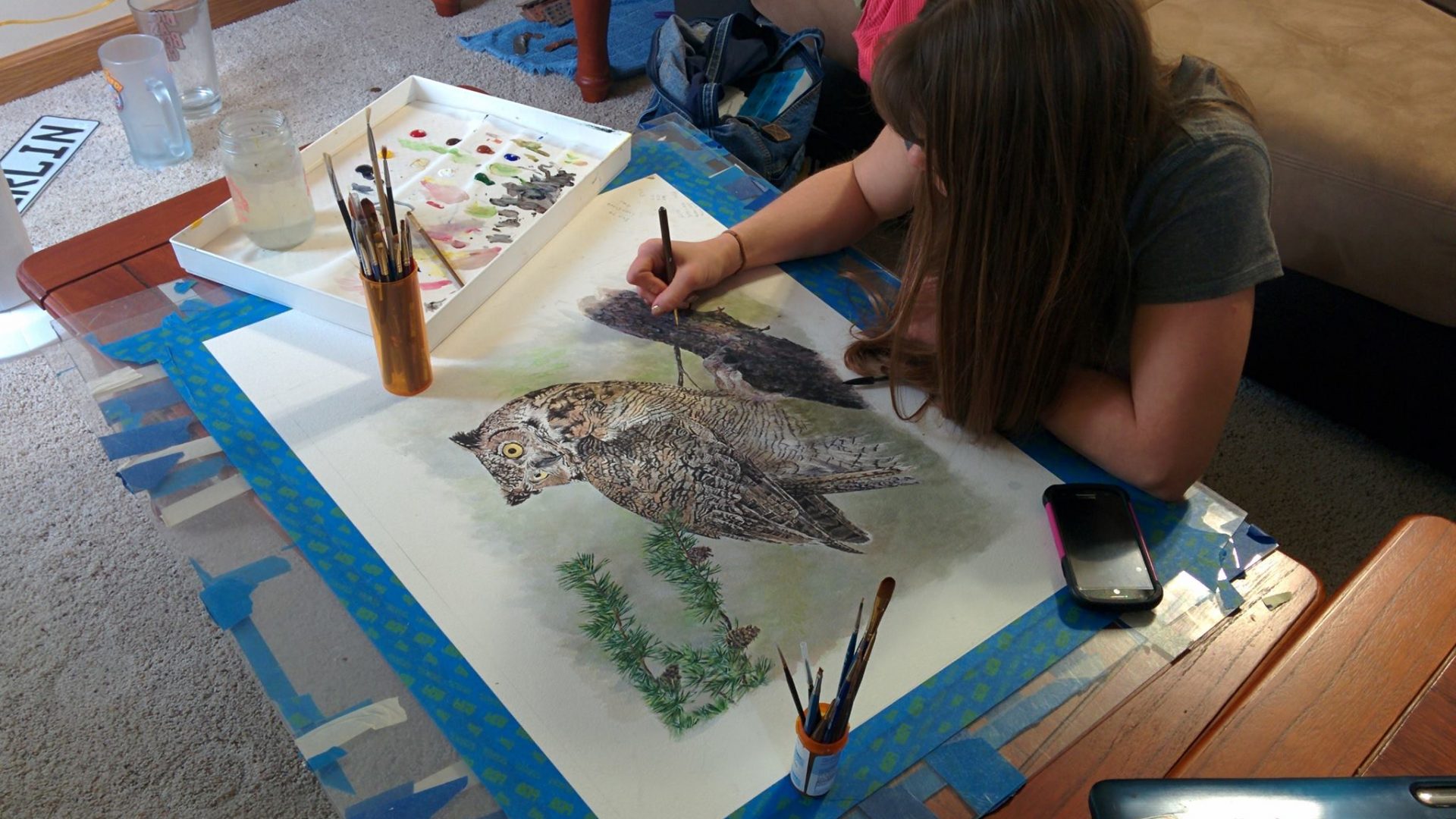Our award-winning calendar showcases West Virginia’s incredible wildlife diversity each year. If you’ve purchased one of our wildlife calendars, you’ve probably learned a few things about black bears, elk, brook trout and other wildlife species that live here in the Mountain State. Now, we want to take you behind the scenes so you can learn about the artists who help us create the calendar.
So, grab your copy of the 2021 West Virginia Wildlife Calendar and follow along. Don’t have one yet? You can buy one online or at participating retail locations.

Honing a natural talent
Carli Ratliff painted “Luna Flyers,” the scurry of flying squirrels under a full August moon in the 2021 WVDNR wildlife calendar. The squirrels share the scene with a Luna moth, cicada shell and Virginia creeper vine on a hickory tree.
“I’ve been drawing since I could hold a pencil,” she said.
This is the eighth time Ratliff’s work has appeared in a WVDNR wildlife calendar. She grew up in Oak Hill, the largest city in Fayette County. Art and nature captured her interests early, influenced by her surroundings and the works of artists in her grandfather’s wildlife art gallery in Michigan.
Ratliff learned to draw mostly through trial and error, mixed with a few classes and study on her own. She did not paint until she attended Concord University. There she learned under the instruction of renowned Venezuelan painter Fernando Porras. Many of his oil and watercolor creations portray universal themes through the stories and plight of indigenous peoples living in the endangered rainforests of South America.

Building a photographic library
Most of Ratliff’s art focuses on wildlife and nature. She learned to photograph whatever she may want to paint so that she could study it in detail. Ratliff attended photography workshops at Hinton’s Three Rivers Avian Center and other locations. The workshops give participants hard-to-come-by opportunities to photograph birds of prey and other wildlife up close and in action.
“I take most of my photographs on nature hikes and around the birdfeeders in my backyard. Some of my subjects can also be found at wildlife preserves or zoos,” she said. “I take pictures of trees, wildflowers, insects, snowfall, and scenery in all different seasons to be used later when an illustration idea emerges.”
Ratliff wanted to enter a painting of flying squirrels for the DNR 2021 wildlife calendar. She had seen no Southern Flying Squirrels in the calendar in recent years, if ever.
The creatures proved to be fascinating — and elusive. Then one blustery night, a sudden gust blew a gliding squirrel off his intended flight path and into a crash landing on her porch. After confirming the squirrel had perished instantly upon impact, she did not waste the opportunity to examine him up close.
Creative process
To paint an image such as Luna Flyers, Ratliff typically starts by pouring over her digital image library.
“Then I lay out my idea in a pencil sketch,” she said. “That’s followed by layers of gouache (opaque pigments or watercolors). It is finished with acrylic paint or Prismacolor pencil.
Ratliff’s work may be familiar to DNR wildlife calendar collectors. Her pieces have appeared in nearly every calendar since 2013. Her featured pieces have been:
- 2013, June. “Bunny Love.” Cottontail rabbit in a field of wildflowers.
- 2014, September. “Snatcher.” Gray squirrel with corncob.
- 2015, August. “Clover for Lunch.” Groundhog grazing in a field of clover.
- 2017. Two selections.
- July. “Clover Cornucopia.” Cottontail rabbits and butterflies in a field.
- December. Gray squirrel in late autumn.
- 2019. Two selections.
- January. “Icy Stare.” Barred owl on a blustery winter cliff.
- July. “Berry Sweet.” Eastern cottontail rabbit in a blackberry patch.
Gifting the West Virginia Wildlife Calendar
Looking for something special to give to friends and families during the holiday season? The West Virginia Wildlife Calendar makes a great gift. Buy your calendars today while supplies last!




